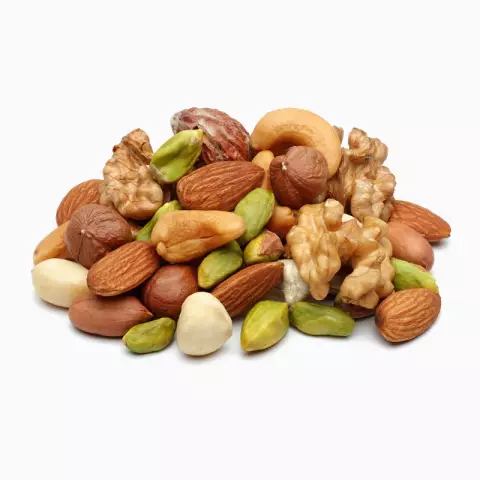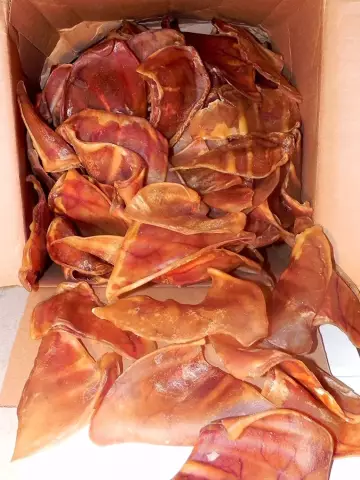- Author Rachel Wainwright [email protected].
- Public 2023-12-15 07:39.
- Last modified 2025-11-02 20:14.
Churchkhela

Eastern cuisine is known for its delicious and original dishes. But churchkhela is at the head of Caucasian sweets. This traditional oriental delicacy has been known since time immemorial. During archaeological excavations, vessels of a special shape with inscriptions were discovered, which indicate that churchkhela was transported in these vessels. However, despite such a long history of existence, the tradition of making this delicacy has survived to this day. The basis of churchkhela are nuts (walnuts, hazelnuts, almonds) and juice, most often grape juice, although you can use pomegranate, apple and others - it will be delicious in any case. Technological methods for making churchkhela in different areas differ significantly, hence the variety of taste.
How to cook churchkhela at home
Churchkhela at home, prepared according to old recipes, is a wonderful delicacy. Walnut slices are strung on a thread, after which it is all lowered into a bowl with thickened boiled grape juice, which should cover each nut. Then the thread is taken out and dried in the sun. After a few hours, the procedure is repeated until a layer of a couple of centimeters forms on top of the nuts, after which the thread with nuts is dried in the sun for two weeks. Then churchkhela is placed in boxes for two to three months, after which the delicacy acquires a wonderful taste and appearance - nuts covered with sweet dried grape juice.
Useful properties and calorie content of churchkhela
As you know, churchkhela is not only tasty, but also healthy. In ancient times, warriors took it with them on a campaign - this product is very nutritious and unpretentious in storage.
- Nuts contain 2-3 times more potassium, calcium, phosphorus, magnesium and iron than fruits, and the protein content is 16-25%.
- Grapes rank first in terms of the content of easily digestible glucose and fructose (12-18%). In addition, 100 gr. contains 0.8-1% organic acids and more than 20 trace elements, 250 mg of potassium, 45 mg of calcium, 22 mg of phosphorus, 17 mg of magnesium, iron, cobalt and other minerals, as well as vitamins necessary for the normal functioning of the body. Grape juice is considered one of the most valuable medicinal, dietary and food products. The pectin substances contained in grapes in large quantities can lower cholesterol levels. Therefore, it is useful for diseases of the lungs, stomach, liver, gout, coronary heart disease, etc. Due to its antioxidant properties, grapes are used to prevent cardiovascular and oncological diseases. Studies have shown that the composition of grapes is similar to mineral water. Therefore, its juice, refreshing and toning, has a healing effect.
- Wheat used to make churchkhela contains 50-70% starch and carbohydrates, essential amino acids and protein, vegetable fats and fiber. In addition, it contains the most important trace elements and vitamins.

The many useful substances contained in the delicacy not only improve well-being, but also bring a huge boost of vivacity. The calorie content of churchkhela is 410 kcal per 100 g. product. However, this dish, having many advantages, has a number of contraindications.
Contraindications to the use of churchkhela
This high-calorie food is not recommended for obese people. Churchkhela should not be used by patients with diabetes mellitus. Liver cirrhosis, urination disorders, the second half of pregnancy, advanced forms of tuberculosis, even allergic reactions to nuts and grapes can be contraindications. In these cases, you should consult your doctor.
But above all, churchkhela is a delicacy that, when consumed in reasonable quantities, can deliver a lot of positive emotions. A kind of energy boost, which is so necessary for residents of both a large metropolis and a small town, where stress awaits a person at every step. Tasty, compact and at the same time nutritious - it was not for nothing that the churchkhela was taken on a campaign by soldiers in ancient times, when the preservation of strength and health was most important.
Found a mistake in the text? Select it and press Ctrl + Enter.






